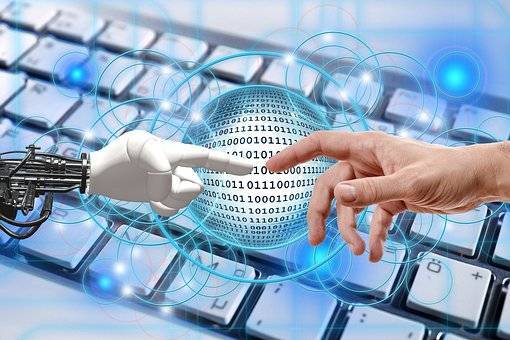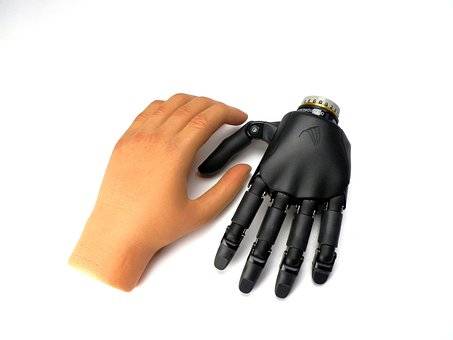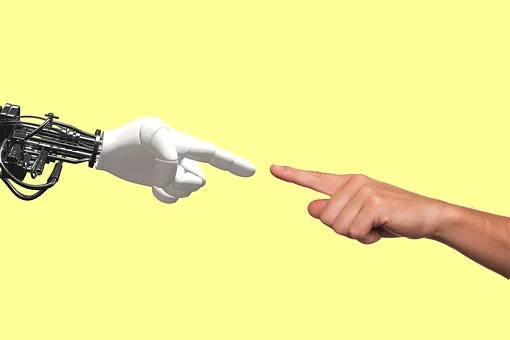So far, you have seen robots doing all the work in the factories and production lines. But have you ever imagined the same taking care of patients in the medical field? Well, that does suffice the question, “Can robots give injections?”

To answer that question, we do have “Cobi,” the robotic vaccine injection system designed and executed by Cobionix, a startup from Canada. You can also term the same as a spinoff company of the University of Waterloo.
Can robots give injections? – Decoded
According to Tim Lasswell (the co-founder of Cobionix), “Cobi” is 100% autonomous and quick at its dedicated functions. After years of research and multiple trial and error, Cobionix has finally come forward with the very first versatile automated system.

The best part is they have designed “Cobi” for a needleless injection technology, and patients selected for trials did receive intramuscular injections from the same. The type of injection pushed into the body was specifically vaccine. That does help us with another question “Do we have a vaccine robot?” And the answer is an absolute yes. Also, the best part is “Cobi” makes it easy for hospitals and healthcare premises dealing with labor shortages, and no longer will one have to wait for the nurse to arrive the next day.
What are the benefits of robots giving vaccine injections?
Well, this far, it was all about “Cobi” being the star of the hour. Well, that is fine, and there is no doubt that the system is doing completely fine. But moving forward, let’s look into the benefit offered by the same over everything else.
- A lot of manual labor gets saved: With “Cobi” taking care of the deal, “Can robots give injections?” humans can now focus on other important tasks. There are no shortages of tasks in a healthcare premise or any hospital, and the more human labor becomes free, the easier it gets. “Cobi” seems like a regular chore and nothing hazardous to maintain.
- Increase in patient outcomes: With such a swift response, timing, and accuracy to its finest levels, hospitals can notice a sudden increase in patient outcomes. That is because “Cobi” does no harm, and the patient gets the vaccine with utmost care.
- Reduction in the cost of healthcare: When robots are taking care of the patient’s needs while managing time efficiently. There is a reduction in the overall cost. This profit amount can be used for other important tasks. People can now get access to better forms of infrastructure and other relevant health benefits.
The working theory of Cobi, the robot
Well, now that you have got an answer to the question, “Can robots give injections?” And it is “Cobi” that can take care of it all. Let’s proceed with the mechanism that “Cobi” abides by.
Understandably, humans might feel a little jittery when trusting a robot with a needle. Letting all the confusion behind and trust issues in the back seat. Cobionix, as a company, has come forward with a needleless technology in the same. Instead, there is a high-pressure jet-fluid technology with a thickness equivalent to human hair. Now, this does inject the vaccine into the patient’s arm tissues.

So far, robots employed in the operational theater have had real surgeons monitoring the progress over live video streams. These medical professionals might be sitting in the next room or a place far off. “Cobi,” on the other hand, has it all automated. It uses cameras to detect a patient’s presence and then proceed with the identification and documentation part.
There is a LiDAR sensor equipped in the hands of the robot, which does run a quick scan of the patient, creating a 3D map of their body. Now, the software included does analyze the best spot for the injection to be pushed inside the body. Ultimately, the robot does instruct the patient about how the particular shall prepare for the shot. This includes making them stand in a particular position and removing of clothing layer for the shot to be injected.
What are the advantages of robots in healthcare?
This far, it was all about Cobi and the way it proposes to be taking care of the health sector. Let’s move forward and have a look into the overall advantages that robots have to offer to the healthcare sector:
Streamlined medical workflows: Routine tasks are now taken care of by the robots. Thus in no way will one fail to complete their daily duties. Robots are now equipped to take care of staffing shortages, changes in inventory stock, and on-time order placement. Also, robots take care of cleaning and sanitization facilities in certain hospitals.
Top-notch patient care: With robots taking care of other essential duties, nurses and caregivers get more time to focus on the patients. Here, robots do take care of the regular sleep timings and other essentials like blood pressure and sugar monitoring processes.
Immediate surgical assistance: Surgical assistance robots have become more precise. They help surgeons to perform intricate operations with the utmost detail. Also, these robotic setups allow surgeons to carry on with the task over the internet. Thus space and time is no way a potential hazard for the patient to give up on their lives.
Safe and automated working environments: As already discussed, robots help with cleaning and disinfecting. Thus helping humans to get rid of hospital-specific infections and pathogen-related hazards.
So that was all explaining “robots being able to give injections.” With time and research, there is hope for the world to come across more detailed forms of robotic connections. And one day, human civilization will come across new levels of innovation, securing the healthcare sector to its best.



